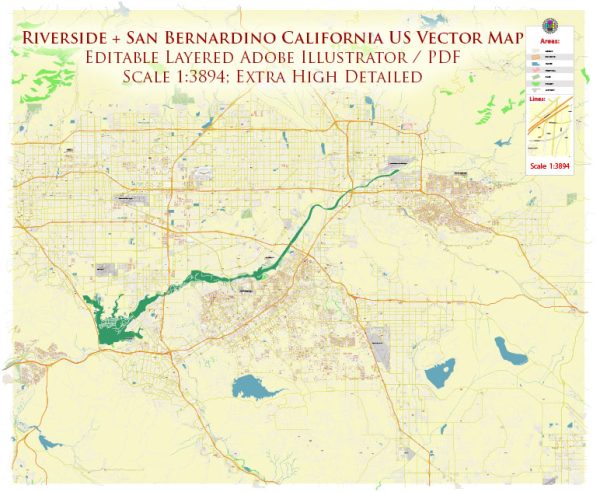The history of urban development in Riverside and San Bernardino, two cities in Southern California, is intertwined with the broader regional and state history. Here’s an overview of the urban development history in these areas:
Riverside:
- Early Settlement (Late 19th Century): Riverside was founded in the early 1870s and became a prominent citrus-producing region due to its favorable climate and soil conditions. The arrival of the railroad in the 1880s further boosted the city’s growth.
- Citrus Industry Boom: The citrus industry played a pivotal role in Riverside’s economy, and the city became known as the “Orange Empire.” The development of irrigation systems and water management was crucial for supporting the extensive citrus groves.
- Mission Inn and Architecture: The Mission Inn, a historic landmark, was built in the late 19th century and expanded in the early 20th century. It became a popular destination, attracting celebrities and dignitaries. The architecture of the Mission Inn reflects various styles, including Spanish Gothic and Mediterranean Revival.
- Suburban Growth Post-WWII: Like many American cities, Riverside experienced significant suburbanization after World War II. The G.I. Bill and the availability of affordable housing led to a population boom as veterans and their families moved to the area.
San Bernardino:
- Railroads and Industry (Late 19th Century): San Bernardino, like Riverside, benefited from the expansion of the railroad. The city’s strategic location made it a hub for transportation and trade. In the late 19th century, San Bernardino was a key center for the citrus industry as well.
- Military Presence: During World War II, Norton Air Force Base was established in San Bernardino, contributing to the city’s economic development. The military presence continued to influence the region’s growth throughout the Cold War.
- Urban Challenges and Renewal: In the latter half of the 20th century, San Bernardino faced urban challenges, including economic decline and suburban flight. Efforts at urban renewal sought to revitalize the downtown area, but success varied over the years.
- Diversity and Demographics: Both Riverside and San Bernardino are ethnically diverse cities, reflecting the broader demographic trends in Southern California. The growth of Hispanic and Latino populations has been significant, influencing the cultural landscape and contributing to the area’s vibrancy.
- Transportation Infrastructure: The development of the interstate highway system, including the I-10 and I-215, facilitated transportation between Riverside and San Bernardino and enhanced connectivity with other parts of Southern California.
In recent years, both cities have experienced ongoing efforts for economic development, community revitalization, and the enhancement of cultural and recreational amenities. Urban planning continues to play a crucial role in shaping the future of Riverside and San Bernardino.


 Author: Kirill Shrayber, Ph.D.
Author: Kirill Shrayber, Ph.D.